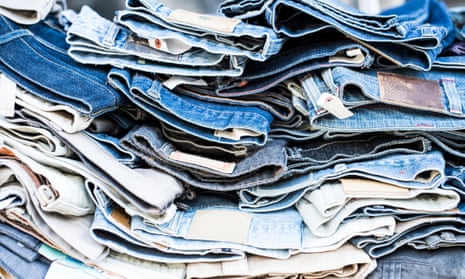Every day, most of us dress ourselves in items churned out by what is arguably the world’s second-most polluting industry.
Reportedly topped only by oil, the fashion industry is contributing to major environmental destruction – mainly because consumers insist on buying so many clothes at such cheap prices.
Water is a significant part of the problem. Textile manufacturing uses huge amounts of water, much of which gets flushed into waterways laden with contaminants such as bleaches, acids, inks and dyes. Horrifyingly, farmers in parts of China and India are reportedly predicting fashion’s next biggest hues by the colour of rivers tainted by textile industry runoff. (Look out for the 2016 documentary River Blue.) Fast fashion has terrible impacts on people, too, with workers in developing nations often paid a pittance to labour in unsafe conditions.
Alternatives do exist. The solution lies in buying less and choosing better quality items that are made as ethically as possible. But how to tell good brands from bad? Our guide to ethical fashion navigates the conundrum.
Buy clothes made locally by ethical labels
Step one is choosing brands that consider the planet and their workers. The desire to wear cheap new looks daily has led to offshore manufacturing in often deplorable circumstances – buying local, well-made pieces can sidestep all that. Great local ethical designers include Melbourne’s Vege Threads, Brisbane’s Alice Nightingale, and Sinerji Organic Clothing on the Sunshine Coast. Stay abreast of emerging ethical labels via online marketplaces such as Well Made Clothes or Sustainable Fashion, through actual markets such as Finders Keepers, or by reading Brisbane-based sustainable style magazine Peppermint. Technology can help to make smarter choices. The free Good On You app rates mainstream brands based on publicly available info, while Baptist World Aid Australia’s annual Ethical Fashion Report grades companies on labour rights and the possibility of exploitation in their supply chain. Choose those at the top of the list, such as Etiko and Jinta Sport, which have received top A+ ratings every year since the Ethical Fashion Report’s 2013 inception. Also keep an eye out for brands with Ethical Clothing Australia accreditation.
Avoid fabrics made using petroleum and chemicals
Think beyond where or how clothing is made, to exactly what each piece is made from. Where possible, skip petroleum-based synthetics such as polyester and nylon, which are actually plastics that take forever to break down once tossed. Each time such fabrics are washed, they shed thousands of microfibres that end up polluting rivers and oceans. (Guppy Friend filter bags, developed in Berlin, are a solution to trapping microfibres in laundries.)
Natural fabrics must also be selected with care. About half the world’s clothes and textiles are made from cotton, usually grown with pesticides and requiring mammoth water inputs. Bamboo has been touted as a more ethical option, but while the plant is farmed sustainably, toxic chemicals are often used to turn bamboo into fabric.
Organic cotton and bamboo linen are better, as is hemp, linen, silk and wool. Lyocell, made from natural cellulose found in wood pulp (harvested from sustainably farmed forest plantations), also rates fairly well. Some brands are even recycling waste into fabric: Melbourne’s Bombshell Bay Swimwear range incorporates polyester made from recycled ocean plastics, while Byron Bay’s Salt Gypsy surfwear uses Econyl yarn spun from pre- and post-consumer nylon waste.
“Choosing better fabrics is essential to us transforming this industry for the better,” says Clara Vuletich, a Sydney-based sustainability strategist who works with Australian fashion brands. “If you consciously decide to purchase a garment made using a recycled material or an exciting new fibre, such as cruelty-free leather made in a lab, you are supporting start-up companies creating new markets, and avoiding the toxic impacts associated with conventional textiles.”

Extend your wardrobe’s lifespan by mending
Once clothing becomes tired and hole-ridden, don’t rush straight to the bin: try mending instead. Call a local clothing repairer or, better yet, join the #visiblemending movement, which encourages entirely obvious and colourful hand-sewn repairs.
“Most clothing problems are easily mendable: missing buttons and loose stitching, for example. But mending is also an opportunity to make your clothes better than new. Visible mending allows you to be creative and celebrate the life of your clothes,” says Erin Lewis-Fitzgerald, who runs a Visible Mending Project in Melbourne. “One creatively mended garment might not save the planet, but it might inspire three other people to start mending and become more aware.”
Those with more time and skills can join the slow clothing movement and sew garments from scratch. Look out for Sydney’s Sewing With Kate and In The Folds for tips and inspiration, or look at Jane Milburn’s Sew It Again 365-day eco-clothing project.
Reduce your consumption by hitting the op shops
A guaranteed way to reduce the fashion industry’s impact is to avoid buying new stuff in the first place. Secondhand stores are the ultimate clothing recyclers – and thrift shop fashion definitely doesn’t have to be daggy. Hannah Klose is proof; the Brisbane founder of Never Ever Pay Retail has amassed a huge Instagram following through daily style posts featuring entirely op-shopped clothes.
“I’ve found so many amazing pieces, some brand new with the tags still attached, for sometimes less than 5% of the retail value – like a Gucci bag for $6, a Carla Zampatti top for $4.50, which would have retailed for over $400, and a Karen Walker skirt for $5,” Klose says. “Collectively, thrifters are helping to divert 300,000 tonnes of textiles from landfill each year. It’s a step in the right direction.”
Those new to op shopping, or who just want to be led to the best local bargain hunting spots, can jump on a guided tour. Check out You, Us and a Bus in Adelaide and Op Shop ’Til You Get Enough in Melbourne, or team up with eco fashion stylist Alex van Os via her Sydney Op Shop to Runway tours. In Ballarat, go full-blown sustainable and do it all on foot, with The Wardrobe Green’s tours.
But a word of caution when it comes to donating clothes. The ABC’s War on Waste survey of 36,700 people found 82% of respondents had donated clothes, yet only 53% had ever purchased secondhand clothing. With supply outstripping demand, and charities overwhelmed by mountains of crappy fast fashion items that can never be on-sold, non-profits have essentially become our dumping ground. Yet another reason to support secondhand stores while winding back our fast fashion addiction.
Switching to more ethical fashion options does take forethought, but the health of the planet and the safety of workers in developing nations depends on it.
- Additional research and reporting by Nicole Lutze











Comments (…)
Sign in or create your Guardian account to join the discussion